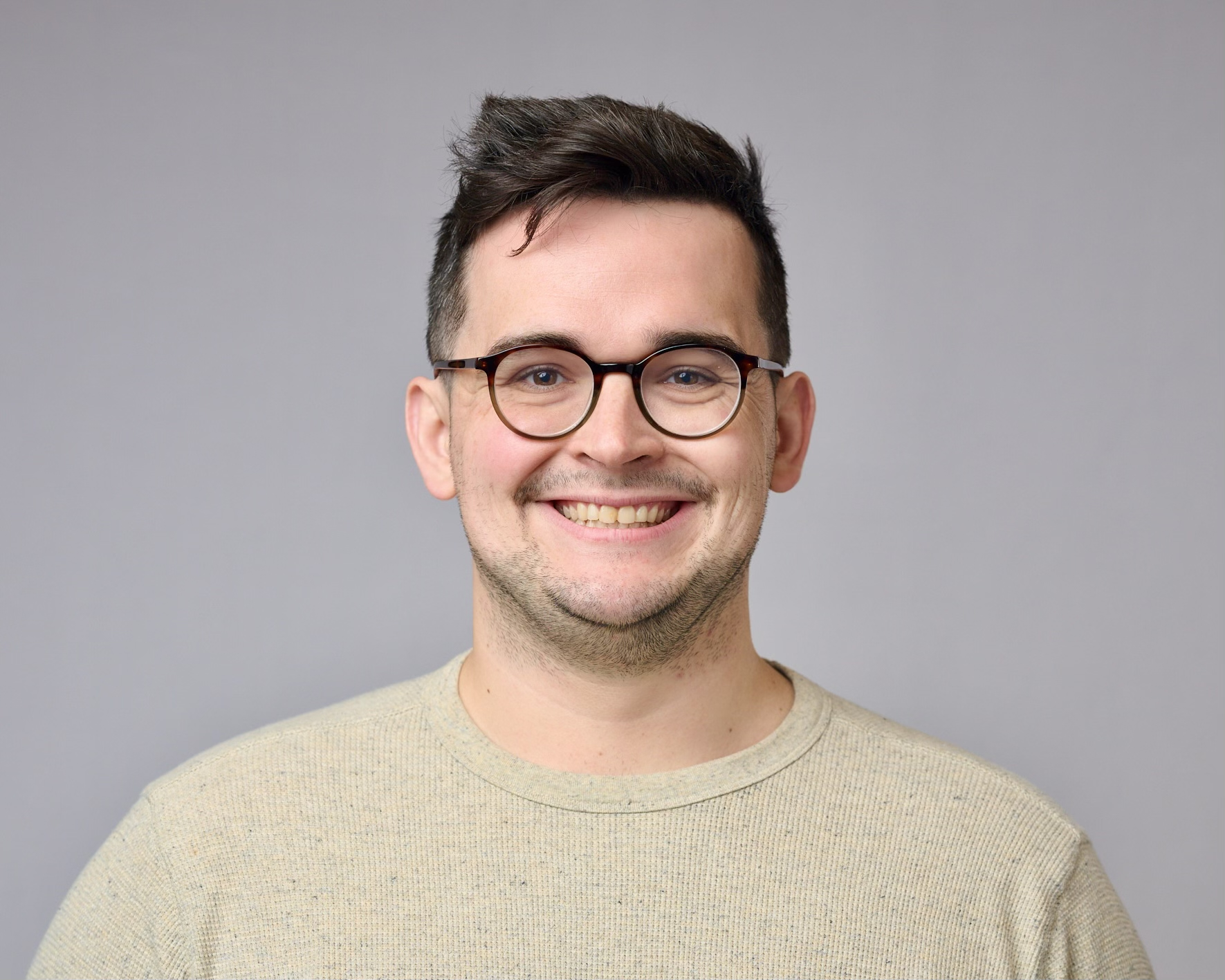Current Research
At Zurich, I study dark energy and cosmology under the direction of Marcelle Soares-Santos. My foci is twofold: improving the instrumentation of current and future cosmological instruments, and understanding the data we obtain from them to better explain our universe.
I spent July 2024 - July 2025 commissioning the LSST Camera for the Vera Rubin Observatory. This includes operation, electro-optical chracterization, and defect analysis in the focal plane. In addition to my hardware study, I implemented the target of opportunity strategy to the Rubin Scheduler, ensuring that Rubin observatory can observe gravitational wave, neutrino, and other time-sensitive astrophysical events to augment the LSST survey.
To support the observations from the LSST Camera, I am leading the pipeline development for analysis of dark siren events using LSST data through a project in the Dark Energy Science Collaboration.
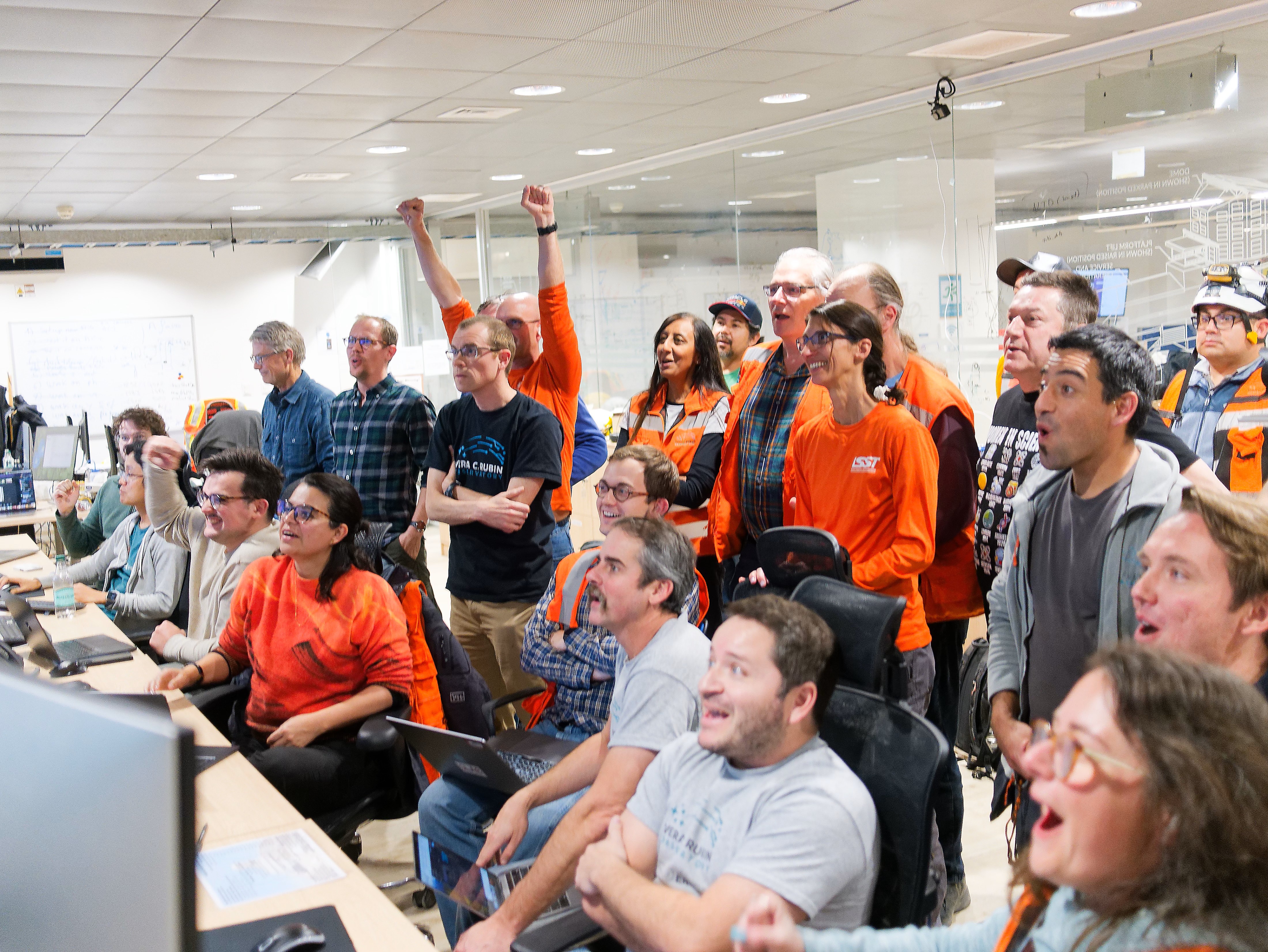
The expertise gained commissioning the LSST Camera will be put to use in the next two years at UZH, where we will be characterizing the prototype image sensors for future cosmology experiments, particularly skipper CCDs.

For the Dark Energy Survey (DES), I have tested and implemented improvements to Dark Energy Survey gravitational wave (DESGW) pipeline, including changes to the telescope strategy and real-time monitoring code. In response to gravitational wave events from the LIGO-VIRGO-KAGRA gravitational wave network, I have observed using the Dark Energy Camera (DECAM) for 10+ gravitational wave events in LVK O4. I have also analyzed DECAM observations for these events. I led coordination between the DESGW group and the Japanese collaboration for Gravitational wave ElectroMagnetic follow-up (J-GEM) for a joint observation of S250328ae using DECam and the Prime Focus Instrument at Subaru Observatory.

The Dark Energy Spectroscopic Instrument (DESI) is the largest multi-object spectroscopic instrument for surveying the universe. The DESI focal plane is composed of 5,000 robotic positioners, each holding a fiber-optic cable. An unforseen challenge of the DESI focal plane design is the development of radial cracks in small pinion gears critical to the movement of the robotic positioner. To test these issues, a telescope simulator was built, with a single fiber positioner for testing installed inside. We are currently testing different operational procedures to rectify the problem through without significant hardware changes.
In parallel to refining the existing DESI instrument, we are planning for the next generation of dark energy surveys. Development of the telescope simulator will enable future testing of prototype instruments. The primary design improvement would be increasing the fiber-positioner density on the focal plane, resulting in an order of magnitude increase in data volume and scientific capabilities.

In May 2024, I moved from the University of Michigan to the University of Zürich when my academic advisor Marcelle Soares-Santos took a position there. I earned my M.Sc in physics from the University of Michigan in May 2024 - go blue.
Past Research
Continuous Gravitational Waves
Previously at Michigan, I studied continuous gravitational waves from rapidly spinning neutron stars. I am developing specialized tools for detecting continuous gravitational waves from post-merger binary star systems that have recently coalesced into a single compact object, usually another neutron star.
Think of this less cosmic example: If a perfectly spherical ball was spinning on the surface of a still body of water, the ball would not generate any ripples in the water due to the uniform surface of the ball. If a rugby ball or any other non-spherical object was rapidly spinning on the surface of a still body of water, it would generate ripples, due to the non-spherical surface interacting with the water differently as the ball progresses through a single rotation.
When neutron stars rotate very fast, they deform from a perfectly spherical star to an oblate spheroid, which looks somewhat like a rugby ball, or an American football. The “ripples in the water” are instead ripples in space, which can be detected with interferometers. These continuous ripples are very weak in comparison to the ripples from mergers, so I use data collected from the LIGO interferometers over their two-year observation runs.
I developed code to model the gravitational wave ringdown of a neutron star binary merger, and separately developed a detection statistic to measure if a given model template is properly detecting an injected signal. I tested different signal models to ensure the robustness of the detection statistic under the tuning of different parameters.
Integrating the LLAMAS spectrograph at the Massachusetts Institute of Technology
I earned the opportunity to further my technical repertoire when I joined the Astronomical Instrumentation Team (AIT) at the Massachusetts Institute of Technology in November 2020, under principal investigator Gábor Fûresz and faculty lead Prof. Rob Simcoe. AIT is building the LLAMAS spectrograph for the Magellan Telescopes at Las Campanas Observatory in Chile, scheduled to be installed in July 2022. I assembled optical mounts and ground support equipment, designed optical mounting fixtures, and tested diffraction gratings to ensure they met optical-design requirements.
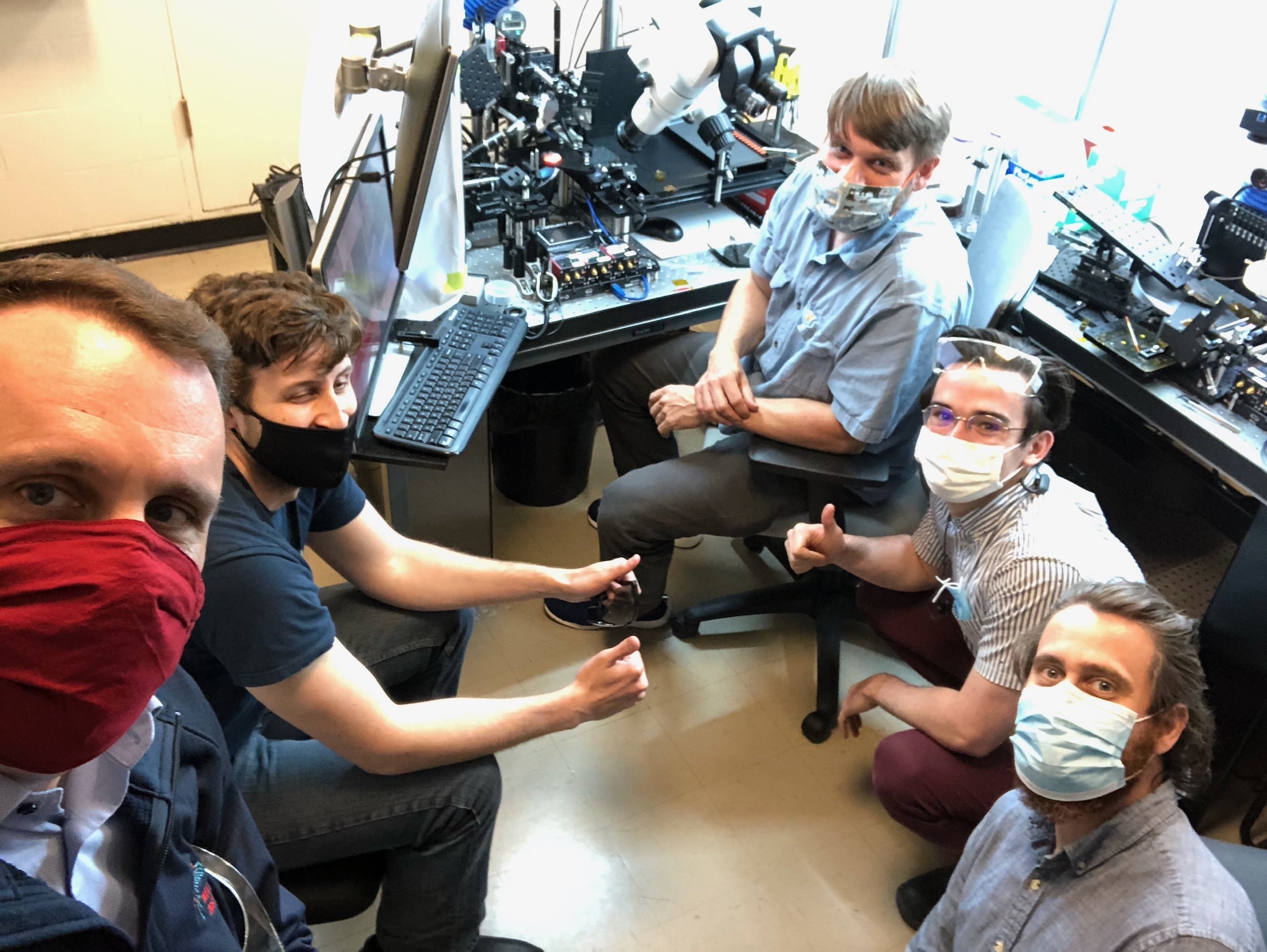
My principal responsibility was integrating the fiber run of the spectrograph. I found that my early attempt to bond fibers with the required precision was too slow to meet our project deadlines. To remedy this, I wrote LabView code to allow for simple DC motor control through a computer interface, removing a critical project bottleneck. These adjustments enabled exceptional accuracy in the fiber run when compared to the design requirements (100% fiber yield vs. 99.5% requirement). I presented the science and engineering status of the LLAMAS instrument to an astronomy class at Wheaton College in November 2021.

The STellar Activity Recorder and SpectroPhotometric ObservaTory
In parallel to LLAMAS, I have developed software tools to support a research proposal for AIT, concentrating on using solar spectrophotometry to extend photosphere and chromosphere events on the sun to activity on exoplanet host stars. AIT has installed a multi-channel solar spectrometer at Lowell Observatory in Flagstaff Arizona to perform a preliminary ground-based study. I created analysis tools for this spectrometer and organized meetings between AIT members and collaborators at other institutions.

Early in the project, I struggled with developing a data pipeline that maintained compatibility with all of the observations, as their file structure was constantly being modified to accommodate the high data volume. After iteration, I constructed a robust and flexible data pipeline with the capability to accurately represent all solar observations. This pipeline enabled a detailed analysis of several solar events in the second half of 2021 and served as supporting evidence in a forthcoming publication that describe the project scope.
Cold-gas and dust evolution in star-forming galaxies
I investigated cold-gas and dust scaling relationships in star-forming galaxies in a joint venture between associate professor Amélie Saintonge at University College London and Professor Maitra at Wheaton College. I built a data pipeline for use with derived data from the xCOLD GASS, JINGLE, and SDSS galaxy surveys. I developed a Markov-chain Monte-Carlo sampler to constrain the relationship between different matter components and the Balmer emission of star-forming galaxies in the xCOLD GASS and JINGLE surveys.
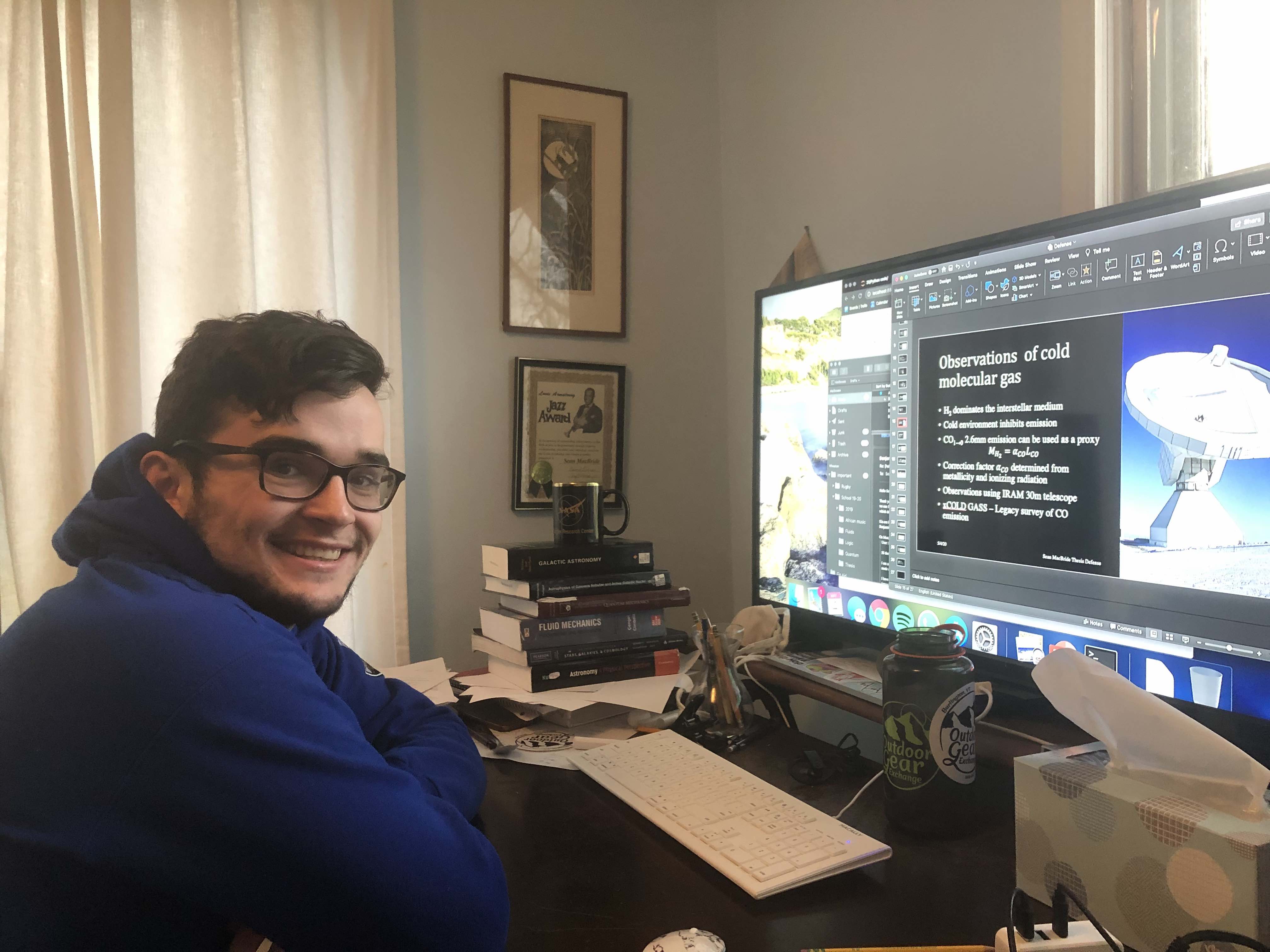
When the full effects of the COVID-19 pandemic began to impact the world, I adjusted to working from home to complete the project within the modified school year. I applied the smaller survey calibration to a wider set of galaxies in SDSS to discover a bias from galactic inclination. Through a virtual thesis defense, I presented these results to faculty and peers from both institutions and submitted a final report, earning the highest distinction from the faculty of both colleges.
Following this presentation, I generalized the calibration to include the effects of galactic inclination to better constrain the cold-gas and dust content. This study will be used with the Bright Galaxy Survey from the newly commissioned Dark Energy Spectroscopy Instrument (DESI) to provide a critical understanding of the evolution of baryons in the dark-energy dominated universe.
Nanophysics for medical diagnostics
I studied at University College London (UCL) during the spring semester of my junior year. The pinnacle achievement of the spring came during a Group Project with other UCL students and the Royal Institute of London, determining the detection limits of lateral flow assays through photothermal heating of magnetic nanoparticles.
While I was unacquainted with the other members of my group and had no previous experience in biophysics, the project provided an opportunity to test my intellectual flexibility and management skills in an unfamiliar environment. I took a leading role in the project by coordinating laboratory logistics, maintaining safety measures, and preparing solutions and samples for observation.
I aided in the design of the sample and laser apparatus, conducted sample experiments, and analyzed photothermal heating data to determine the optimal solution concentration and membrane type to maximize the photothermal signal. The results of this study were documented in a report, presented at a poster session, and received the highest marks from UCL and Royal Institute faculty.
Tidal disruptions in dwarf satellite galaxies
In the summer following my sophomore year at Wheaton College, I earned a position in the National Science Foundation Research Experiences for Undergraduates program at Rutgers University. I was paired with Professor Carlton Pryor to study dwarf satellite galaxies using astrometry from the second data release of the Gaia space observatory. I developed a data pipeline with photometric and kinematic filters that could be applied to any Gaia data selection. After failing to discover a structural disruption in the Boötes dwarf satellite, I detected a tidal tail induced by the proper motion of the dwarf satellite Carina.
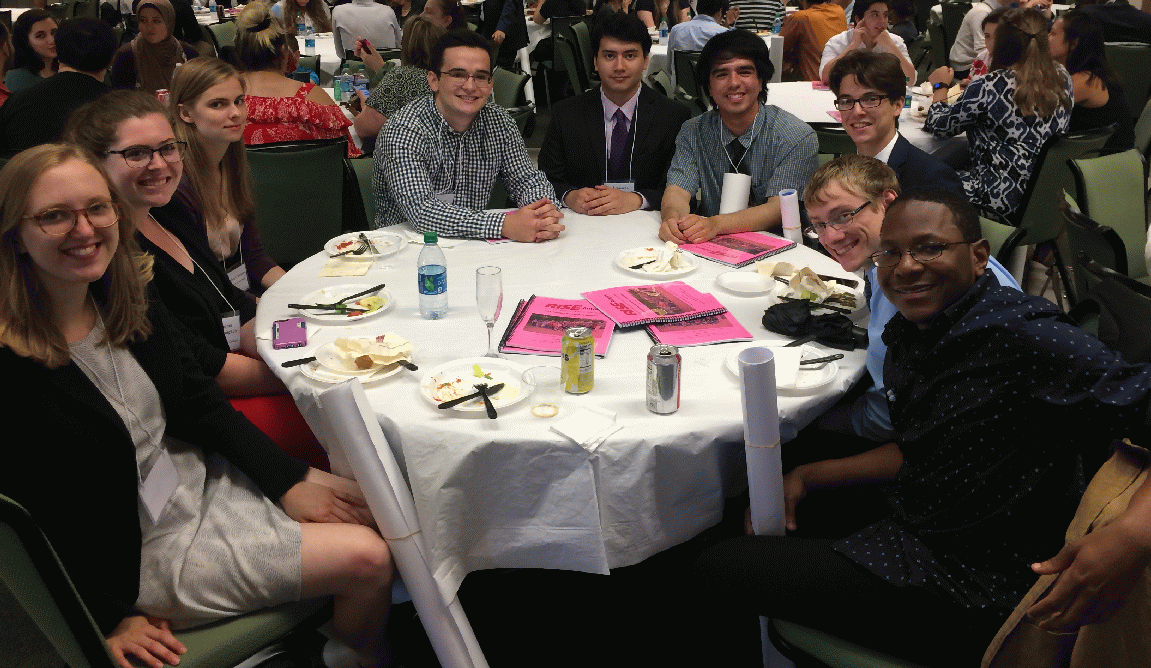
Accepting the minor setbacks that preceded this awe-inspiring scientific discovery was a crucial moment that pivoted my research philosophy towards appreciating every step of the process that precipitates success. I presented a poster at the Rutgers Summer Research Symposium and the 234th meeting of the American Astronomical Society in St. Louis, Missouri. I also delivered oral presentations to faculty and peers at both Rutgers University and Wheaton College.
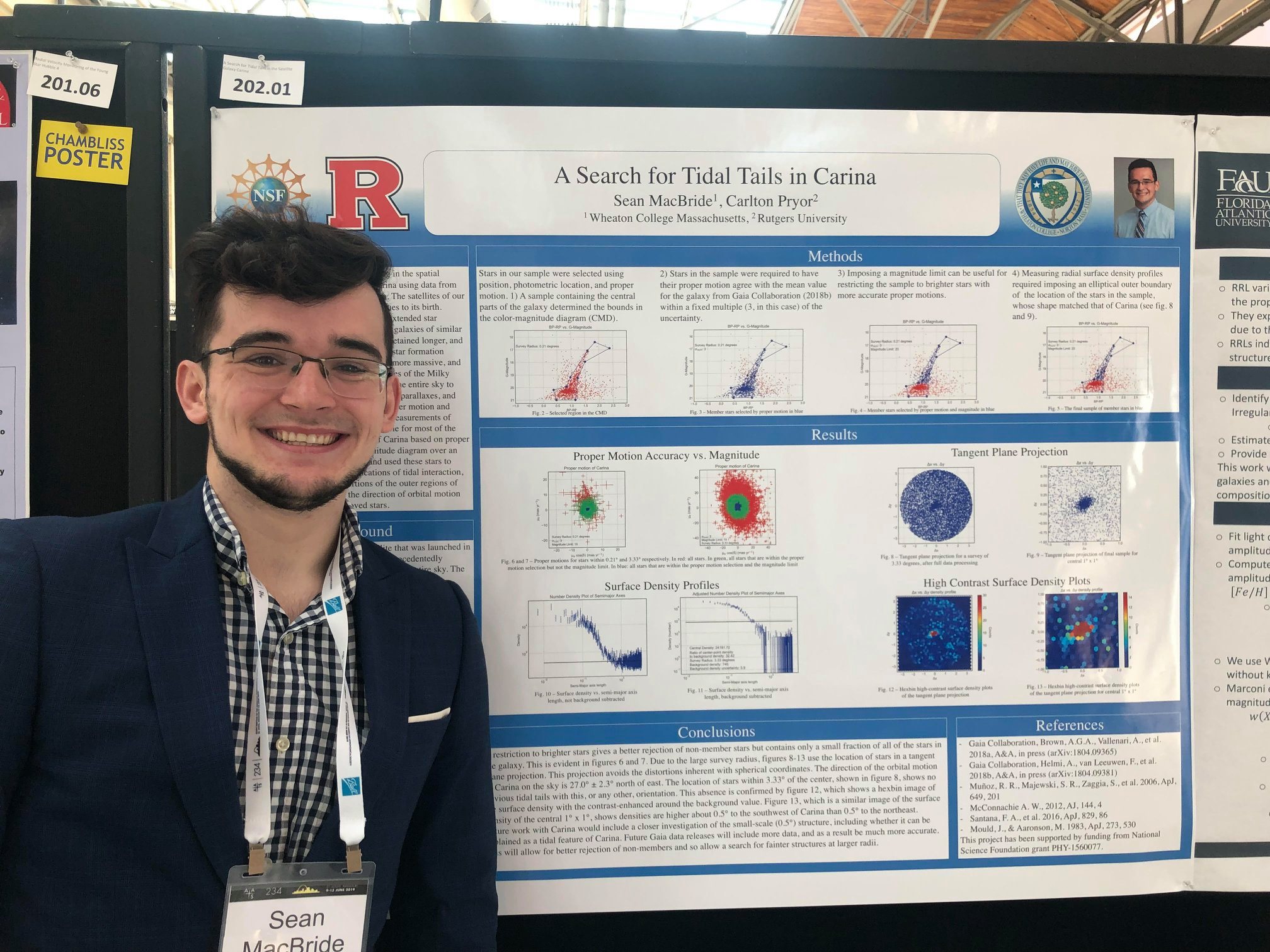
Presenting at Wheaton College enabled an opportunity to become an active peer advisor to other Wheaton students, providing academic, professional, and personal guidance on a formal and informal basis. Studying at Rutgers offered me the chance to be a principal contributor in an astronomy research project and to improve the careers and lives of fellow students, even after I graduated.
P.A.N.O.P.T.E.S.
In my sophomore year at Wheaton College, I shifted my focus towards astronomy. I sought out Professor of astronomy, Dipankar Maitra. Professor Maitra connected me with another Wheaton student, and we began collaborating on a citizen-science exoplanet collaboration called project PANOPTES. In coordination with software engineer James Synge of Google, we installed a robotic telescope inside an observatory dome at Wheaton. When installing the unit, it became clear that some modifications to the magnetic sensors in the dome were necessary to ensure continuous compatibility.
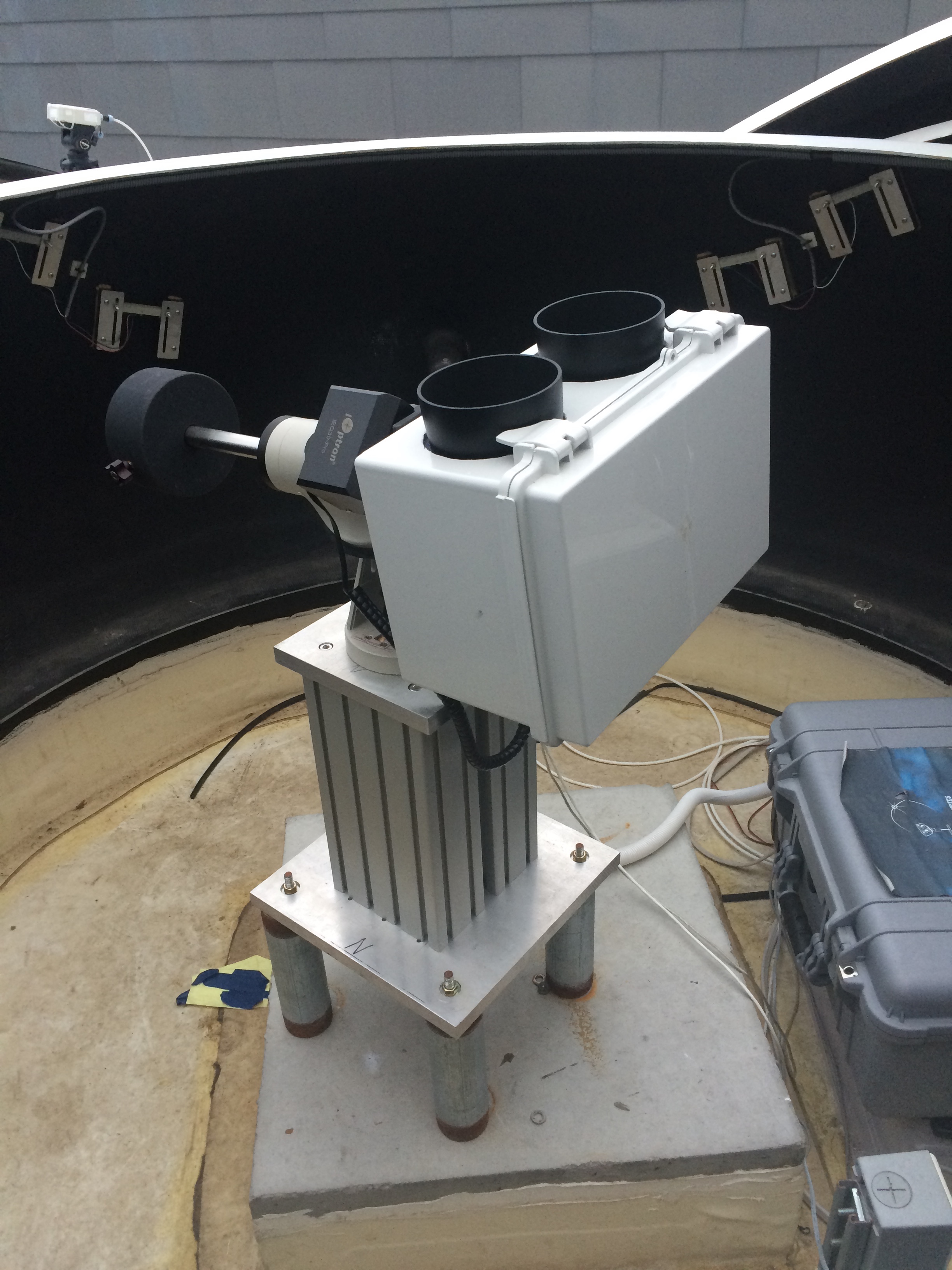
After amending the sensor placement with hand tools, I aligned the unit over three nights of precise adjustments in the frigid February weather of Massachusetts while the PANOPTES team communicated through an online chat. Once operating, I presented the PANOPTES instrumentation at the Northeast Astronomy Forum 2018 in Suffern New York in the hopes of attracting other amateur astronomers to expand the PANOPTES network.
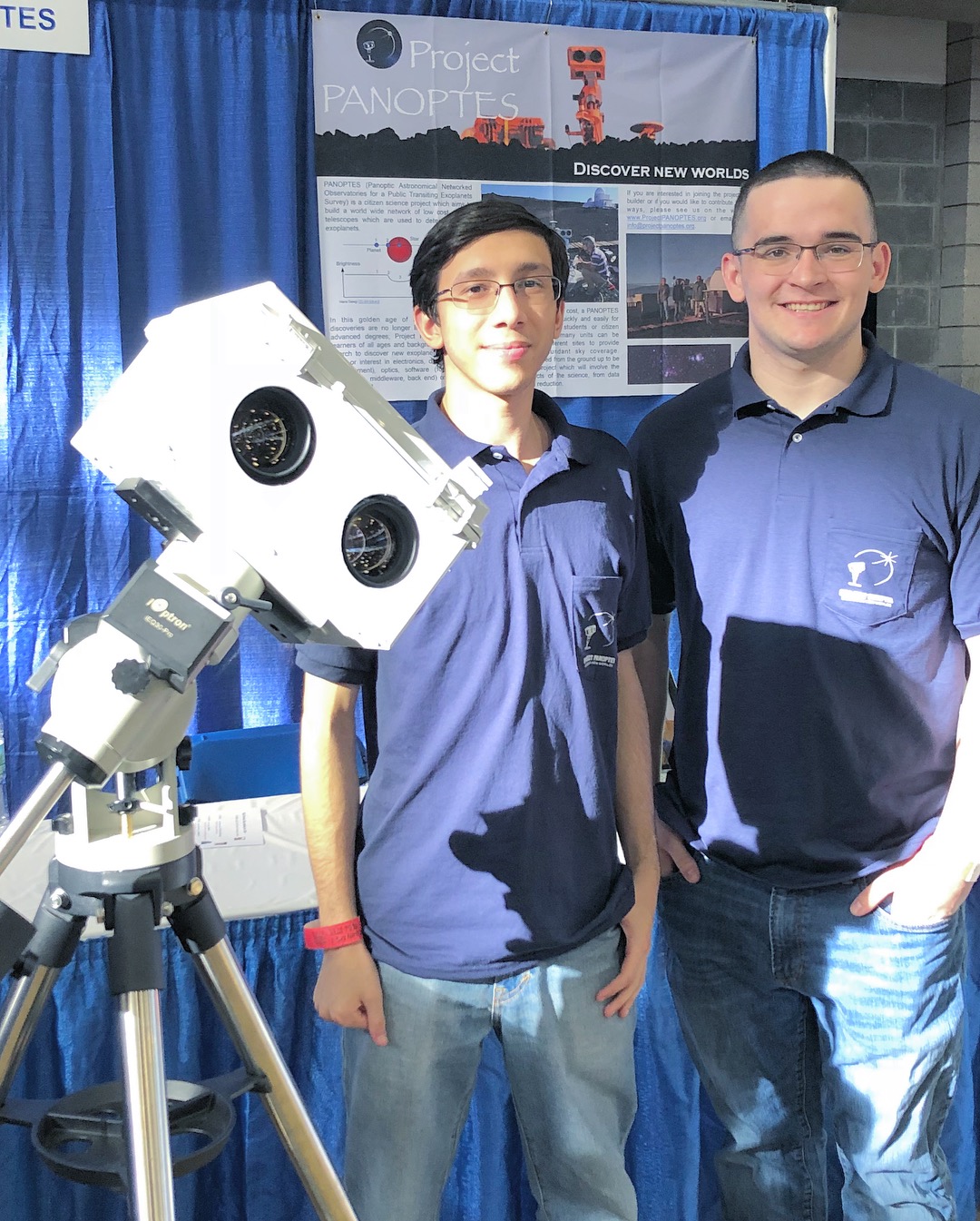
I continued maintenance on the PANOPTES telescope and observatory dome until it was removed for weather-proofing upgrades in December 2018.
Outreach
I have been lucky enough to engage with the public to discuss science, physics, and astronomy.
- I provided several interviews to news outlets on behalf of Rubin Observatory, including the BBC on two occasions, the Wall Street Journal, and Science News .
- From 2023 - 2024, I led a high school group of students to operate a solar telescope and take images of the sun during the 2023 annular eclipse and 2024 total eclipse. I encouraged safe and responsible observations and discussed the science of eclipses with the public through several local news outlets, including NBC-5, Vermont Public Radio, and the Essex Reporter
- With support from others, I helped to organize and volunteered at the Conferences for Undergraduate Women in Physics (CUWiP) 2024 at the University of Michigan-Ann Arbor
- In 2023, I led an exhibition showcasing physics experiments to elementary school students at the Metro Detroit Youth Day in Belle Isle, Detroit, MI.
- In 2023, I designed an art installation in the University of Michigan Physics help room showcasing previous experiences by graduates of the undergraduate program, highlighting struggles they overcame and professional success in their later lives
- From 2016 - 2020, I provided tours and open nights at the Wheaton College Observatory in Norton MA, showcasing features of different telescopes to local tour groups.
CV
My most recent C.V. is available for view or download here.
Contact
- sean.macbride[at]physik.uzh.ch or sean.p.macbride[at]gmail.com - I always love to chat about new ideas!
- GitHub
- My office at Zürich is Y36 J 34.
- I am currently living in La Serena, Chile, but my home is Burlington VT.
